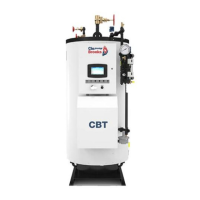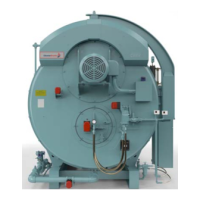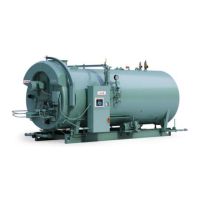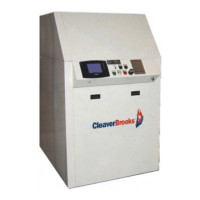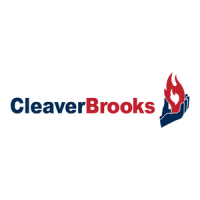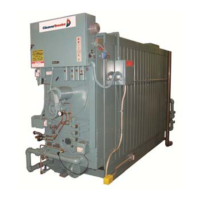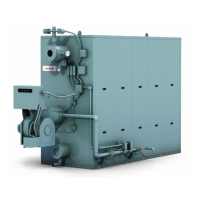750-91 (revised 2009)
Model CB-LE Packaged Boiler Manual
6-15
6.16 — Gas Pressure and Flow Information
6.16.2 — Gas Flow
The volume of gas flow is measured in terms of cubic feet and is determined by a meter reading. The gas flow rate
required for maximum boiler output depends on the heating value (Btu/cu. ft.) of the gas supplied and boiler effi-
ciency. The supplying utility can provide the information.
INPUT = OUTPUT x 100%
EFFICIENCY
GAS FLOW = INPUT
GAS Btus/Ft
3
= OUTPUT x 100
EFFICIENCY x GAS BTUs/Ft
3
6.16.3 — Pressure Correction
The flow rate outlined in Section 6.16 is based on a “base” pressure, which is usually atmospheric or 14.7 psia.
Meters generally measure gas in cubic feet at “line” or supply pressure. The pressure at which each cubic foot is
measured and the correction factor for the pressure must be known in order to convert the quantity indicated by
the meter into the quantity which would be measured at “base” pressure.
To express the volume obtained from an actual meter reading into cubic feet at base pressure, it is necessary to mul-
tiply the meter index reading by the proper pressure factor obtained from Figure 6-10.
Conversely, to determine what the meter index reading should be in order to provide the volume of gas required
for input, divide the desired flow rate by the proper pressure correction factor. This answer indicates the number of
cubic feet at line pressure which must pass through the meter to deliver the equivalent number of cubic feet at base
pressure.
For example, assume that a 600 horsepower boiler is installed at 2,000 feet above sea level, is equipped with a stan-
dard gas train and a high turndown burner, and that 1,000 Btu natural gas is available with in incoming gas pressure
of 3 psig. The pressure and flow requirements can be determined as follows:
PRESSURE
Correction for the 2,000 feet altitude must be made since altitude has a bearing on the net regulated gas pressure.
The standard gas train requires 37.5” WC gas pressure at sea level. Figure 6-7 indicates a correction factor of 1.07
for 2,000 feet. Multiplying results in a calculated net regulated gas requirement of approximately 40.1” WC. This is
the initial pressure to which the regulator should e adjusted. Slight additional adjustment can be made later, if nec-
essary, to obtain the gas input needed for burner rating.
FLOW
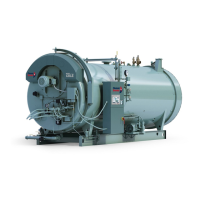
